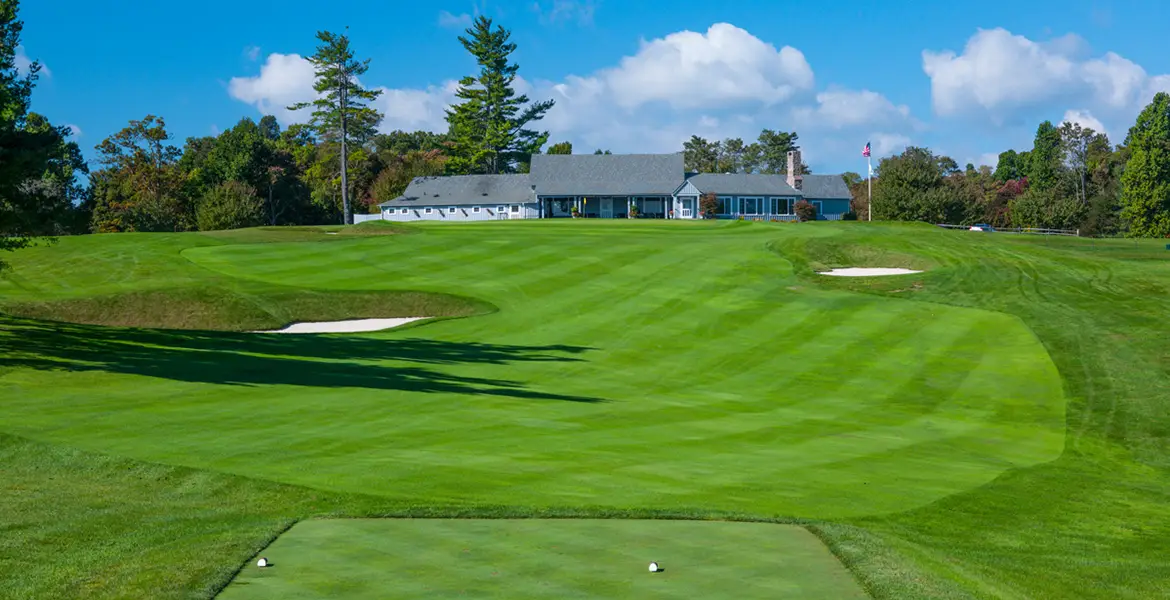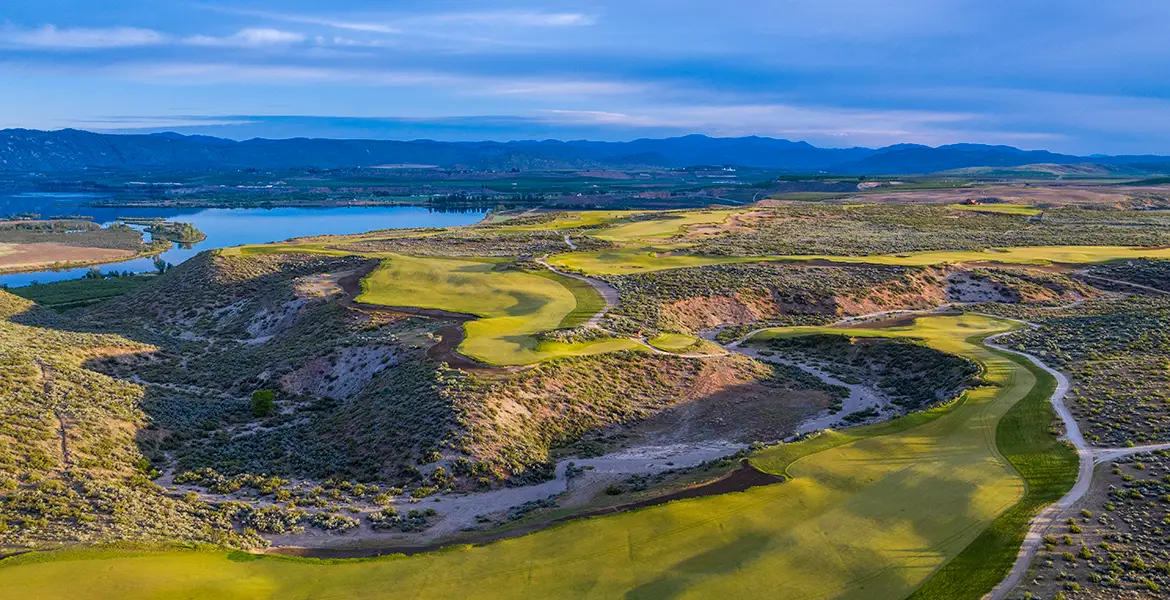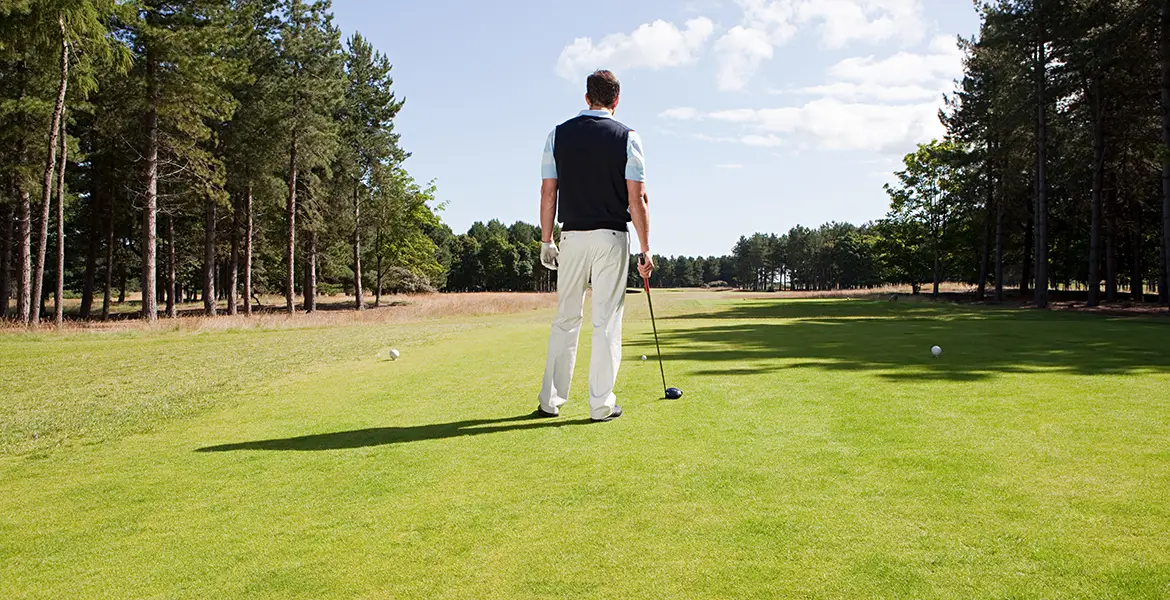Golfers in Britain have good reason to be grateful for development of the railway network in the 19th and 20th centuries. Had it not been for trains whisking travelers on holiday from London to Turnberry, for example, the rugged Scottish links and British Open venue by that name might have remained anonymous. Likewise for Gleneagles in the foothills of the Scottish Highlands, and such English seaside courses as Royal Birkdale and Royal Lytham & St. Annes.
Perhaps the country that has benefited most from rail travel is Wales. One of its finest courses, Aberdovey, was for the first half-century of its existence accessible only via the Cambrian Railway, which stretched up and down the mid-Wales coastline. Aberdovey’s name resonates among golf aficionados for two reasons, the first being the quality of the course, a sporty links laid out on a narrow strip of land parallel to Cardigan Bay.
On the inward side of the property is the aforementioned railway; on the seaward side, rows of massive dunes that hint at the crashing waves beyond (the sea is visible only from the 12th green and from a few back tees set high in the dunes). These days it matters not whether you arrive at Aberdovey by car or train, for the last few yards of the journey are the same: You cross the railway line, lift the steel latch on a gate, walk 20 paces and there is Aberdovey, spread out before you in all its splendor.
The second reason for Aberdovey’s fame is its status as the course Bernard Darwin called home. No one has exerted a greater influence here than the famed golf writer and grandson of naturalist Charles Darwin. Bernard’s maternal antecedents founded the club (an uncle placed jam jars in the ground to act as the first holes), and he won a stroke-play competition (with a score of 100) as a 15-year-old in 1892.
For the better part of 40 years, Darwin spent the New Year’s holiday and summer vacations as the houseguest of an Aberdovey member who lived in town. He was responsible for recruiting first Harry Colt and then James Braid to make architectural revisions to the course (Herbert Fowler later had a hand in it, as well). He was an honorary life member of the club, served as its president for two terms of office and wrote about the club so often in The Times of London that he referred to it as “my King Charles’s Head,” meaning a place about which he had no journalistic objectivity.
After leaving university, Darwin lived and worked in London. This meant that to reach Aberdovey, he had to take the train. Incomparable essayist that he was, he penned an enchanting passage about the journey, concluding: “The train comes into a country of mountains and jolly, foaming mountain streams. It pants up the steep hill to a solitary little station called Talerddig. Then on again through the darkness ’til we stop once more. There is a wild rush of small boys outside our carriage window, fighting and clamoring for the privilege of carrying one’s clubs. Nunc dimittis—we have arrived at Aberdovey.”
In the early 1900s one of those youths jostling for Darwin’s bag may well have been the son of the club pro. That youngster, Harry Cooper, would later accompany his father to the U.S., acquire the nickname of “Light Horse” for the speed with which he played, and gain repute as one of the best players never to win a major championship (Cooper lost a playoff with Tommy Armour for the 1927 U.S. Open and settled for second place again at the 1936 Open).
When you arrive at Aberdovey today, there is no rush of young boys to carry one’s clubs, but in many ways what Darwin saw when he got off the train a century ago is the same scene that greets a present-day visitor. The 18th green is only a chip shot away from the clubhouse. Many tees adjoin greens of previous holes, as they do on the Old Course at St. Andrews. Golf at Aberdovey is a reminder of what the game was like in a bygone era, a time before noisy earthmovers scraped and shaped the landscape, before water was considered an essential element of a course’s defenses. As in those days, grazers here are allowed to bring their livestock onto the course (cattle in summer, sheep in winter).
Aberdovey (which in Welsh means “mouth of the river Dovey”) measures 6,445 yards from the back tees and includes three par-5s and four par-3s, three of them on the outward nine. One of those par-3s, the 173-yard third, was Darwin’s favorite short hole. It requires a blind tee shot to a green that in the writer’s day was surrounded by much sand. Darwin said “the club is rather proud of this … hole, which consists of a rather terrifying iron shot perfectly blind, over a vast and formidable hill shored up with black railway sleepers onto a little green oasis amid a desert of sand.”
It was on this hole that an electric gadget was installed to tell golfers the putting surface was clear. Because golfers could not view the green, according to a report in the London Globe of September 24, 1909, “an apparatus has accordingly been fitted on the teeing ground which shows at a glance if the putting green is clear. If it is not, the apparatus is set at ‘danger.’ As soon as the players have holed out they press a button and the apparatus signals ‘all clear.’”
Aberdovey’s primary defenses are undulating terrain, fast greens and wind that blows almost constantly in from the sea. The routing develops like a piece of music: The opening holes are quiet, the middle ones grow bolder and from the 12th onward they become downright frenzied. Just stand on the tee of the 288-yard 16th with a crosswind off the surf and see if you can find the narrow fairway. “No man is a medal winner until he has played that shot and sees the ball lying safely on the turf,” Darwin wrote in his tome, “Golf Courses of the British Isles” in 1910.
Even if you make par on this tricky little devil, can you do the same at the 17th and 18th, both stout par-4s that require pinpoint driving and approach play? The 18th, say the locals, is perhaps the best finishing hole in Welsh golf, with the railway line running down the left, and ditches and bunkers on the right.
At the end of the round there is ample opportunity for a toddy or a cup of tea in the handsome new clubhouse, which opened in 1997 after the previous facility had burned down two years prior. Thus refreshed, you retrace your steps over the railway line either to catch the train or drive away on your own. As you go, you take with you an overwhelming sense of history, and perhaps a knowing smile as you think back on what Darwin described as “the course that my soul loves best of all the courses in the world.”






